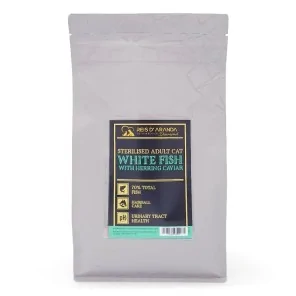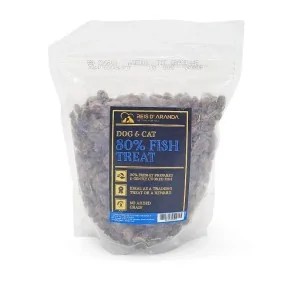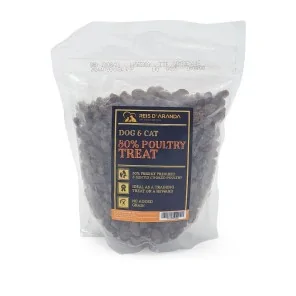The Tornjak originated from genetically homogeneous, almost extinct, indigenous shepherd dogs. These dogs have...
THE NEVA MASQUERADE CAT
INTRODUCTION
The neva masquerade cat is the colour point pattern variety of the Siberian cat, although it is now officially recognised as a breed by the Fédération Internationale Féline Fédération Internationale Féline (FIFE). This cat was first seen in the Neva river basin of St. Petersburg in Russia. Although the Siberian cat has been the long-haired cat of Russia for the last centuries, it was not until the 80's of the last century that the breeding of the colour point variety, i.e. the neva masquerade, was enhanced and separated from the Siberian.
THE ORIGIN OF THE NEVA MASQUERADE CAT
The neva masquerade is a colourpoint variety of the Siberian cat, which means that it has ‘coloured points’ on the face and paws. Like the Siberian cat, the neva masquerade breed has its origins in Russia, named after the Neva river in St. Petersburg, where it was first seen in the late 1970s.
However, Siberian cats first appeared much earlier, around the year 1000. They are native to Russia, come from the cold climate of the Siberian forest and are designed to survive. Russian farmers and traders were the first to look after Siberians, as they needed to protect grain and other produce from rodents.
You may be wondering why you have not heard of the neva masquerade until recently. A common answer is that its approval as a breed did not come until 2009, when the neva masquerade was fully recognised by the FIFE (Fédération Internationale Feline) as an official breed. The neva masquerade started to appear in different countries around 2010, and is becoming more and more popular. However, they are often still seen as the traditional Siberian cat.
WHAT DOES THE NEVA MASQUERADE CAT LOOK LIKE?
BODY: Medium sized and elegant. The body is muscular of medium length, firm and agile. The legs are muscular, long and slender. The legs are narrow and oval. The tail is long, strong at the base and ends in a tapering tip. The neck is slender.
HEAD: The head shows a moderate wedge shape and gently rounded contours. The nose is of medium length. The profile is slightly curved. The chin is firm.
EARS: The ears are large and set wide apart. They are broad at the base and slightly rounded at the tips. Ear tufts and a thumb print are desirable.
EYES: The eyes are large, bright and expressive, slightly almond shaped and set wide apart. The eye colour is pure and clear, amber to green. In silver varieties green is preferred. The eyelids are rimmed (eye rims) with the colour of the ‘ticking’ in all chromatic variations.
COAT: The coat is of medium length, fine and glossy with a dense undercoat. Collar and breeches are desired. The tail is fluffy like a feather.
TICKING: Double or preferably triple bands in each coat. Ticking extends evenly and without streaks over the whole body. The line along the spine (eel line), the tip of the tail and the plantar side of the hind legs are intensely coloured with the colour of the ticking.
COLOURS:
SILVER FREE:
- Ruddy
- Blue
- Fawn
- Sorrel
WITH SILVER:
- Black silver
- Blue silver
- Fawn silver
- Sorrel silver
FAULTS:
- Stripes on front legs
- Broken collar
- Undercoat grey or too light
- Too little ticking
- Ghost marks
- Lack of outline or eye rims
- White extending beyond the chin
- Faults excluding the certificate
- White medallion (locket)
- Whole collar
- Stripes on all 4 legs
- Large amount of grey undercoat
HEALTH OF THE NEVA MASQUERADE CAT
Neva Masquerade cats are generally in good health, but like most cats, they are carriers of hereditary diseases. A typical hereditary disease we see in this breed is hypertrophic cardiomyopathy (HCM). This is the most common heart disease in cats. It causes an expansion of the heart muscle and can be detected with an echocardiogram.
The coat is dense, semi-long and consists of three layers, with a water-repellent top coat. The coat should be brushed twice a week to avoid knots and tangles. Use a metal comb or brush to keep the coat soft. You may need to brush more frequently during the spring, when neva masquerades tend to shed a lot.
The water-repellent coating can make bathing your neva masquerade a challenge. However, baths are rarely necessary if you care for their coat regularly.
Because neva masquerades love nature and moving around, they love to spend time outdoors. They are not at all delicate and neither rain, storm nor snow can stop them from going out of the house. These intelligent cats and good hunters love to roam in the undergrowth, climb and chase birds and small rodents. Consequently, they are suitable to be kept indoors only to a limited extent. The perfect home for these cats should offer them sufficient options to entertain themselves physically and mentally, both indoors and outdoors. Ideally, they should have access to a secure garden or balcony with a suitable outdoor scratching post and plenty of opportunities to play.
All this, together with an appropriate diet, is the best guarantee for a long and healthy life. As carnivores, cats require food rich in healthy proteins and can only use a small amount of carbohydrates. In this respect, your role is to be careful about the food you buy for your cat. The right food for your cat should contain plenty of meat and few vegetable by-products.
THE NEVA MASQUERADE CAT'S PERSONALITY
The neva masquerade and the Siberian cat share the same breed standard, both in appearance and character. They are intelligent, curious, tender, sweet, cheerful and affectionate cats. They are companion animals, ideal for families and get on very well with children and other pets. When you come home, they will most likely give you a warm welcome.
This furry feline is active, agile and athletic, and has lots of energy. They can learn tricks and play fetch. A little patience is all it takes to train this bright and eager feline, and in return, you'll have a loving and fun companion. Neva masquerades are famous for their pirouettes, meows and chirps. They like to communicate, but, fortunately, they are not very noisy.
CONCLUSION
The neva masquerade is an eye-catching cat. Being the point variant of the Siberian, the breed attracts interest because of its primitive appearance: the long dense fur on the neck, the tufts of hair on the ears, the muscular body and the opulent tail give this small feline the appearance of a miniature wild cat. It is therefore not surprising that both the Siberian and the Neva Masquerade are descendants of forest cats.
Leave a comment
Log in to post comments
















